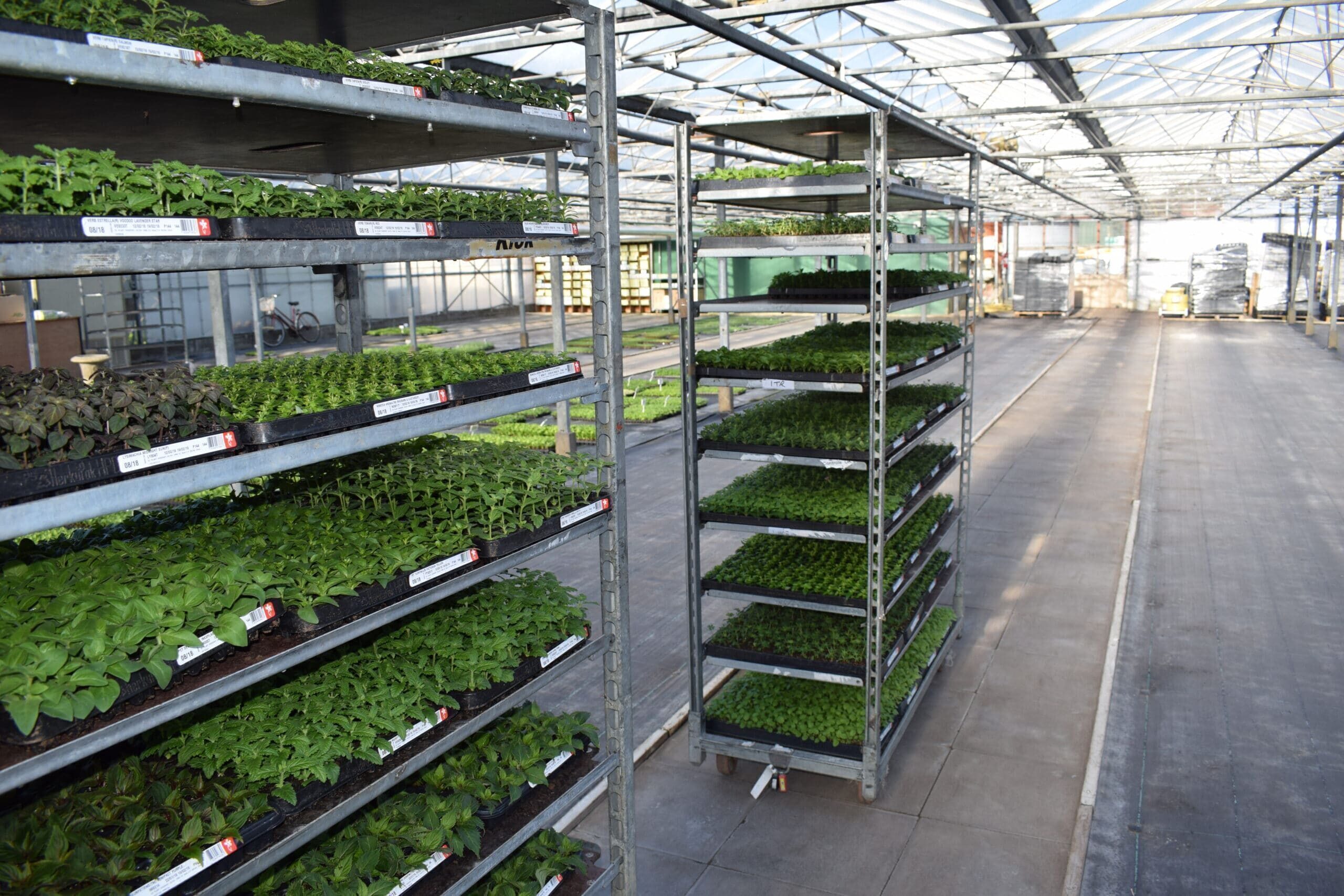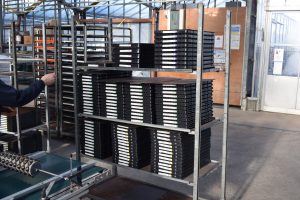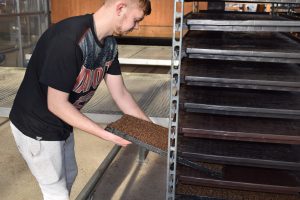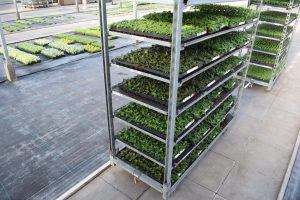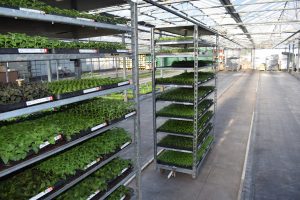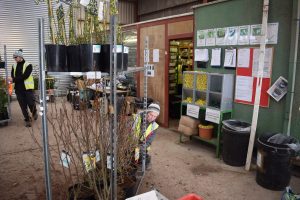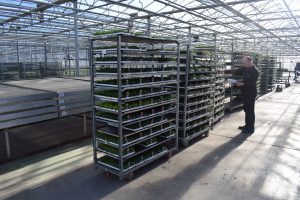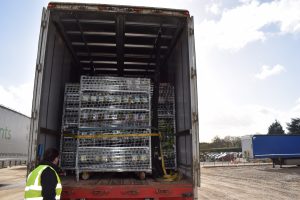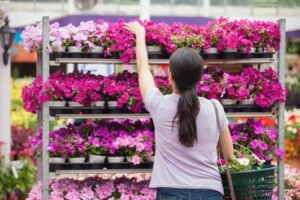We all know the CC Container as a transport item between growers, traders and retailers, but it’s also an important tool linking the stages in the growing cycle. It helps reducing time, handling and so the cost of production. The journey of a plant in pictures!
| 1) Seeds are sown into plug trays. The trays are stacked onto a CC Container and moved to the germination area.
|
2) Once the seeds have germinated, the plug trays are put back on a CC Container and transported to the young plant nursery for first stage growing and root establishment.
|
| 3) When the young plants have established, the trays are placed back onto a CC Container, moved to the transplanting area and transplanted into the growing tray.
|
4) Once transplanted into the final tray, the plants are once again put back on a CC Container and transported to the growing area.
|
| 5) When the plants are fully grown and ready for sale, they again take a journey on a CC Container to the processing area, ready for cleaning and labelling.
|
6) Once prepared ready for sale, the plants are transported to the dispatch area, where they are consolidated with other plants that are part of the order, ready for delivery to the customer.
|
| 7) Delivery to the retailer is the final stage – and furthest distance travelled – of the production and delivery cycle.
|
8) Finally, selling and merchandising of the plants (“the final 10 metres”) on a CC Container.
|
This is the minimum number of steps in the CC Container’s journey from nursery to retailer, but there could be several more, adding further to the time the Container remains in the plant production cycle! For example, they may be transported to another grower, they could be moved to another growing area, or they could be moved to another grower or to a wholesaler.

